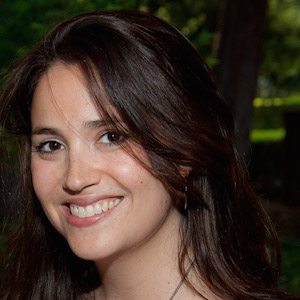If recent years are anything to go by, the state of women in the media is grossly disappointing, characterized by a slew of demoralizing sexist episodes (The Onion calling a 9-year-old actress the c-word in 2013; the unceremonious 2014 firing of New York Times executive editor Jill Abramson; British paper The Sun’s bare-breasted Page 3 disappearing only to reappear in 2015 — to name but a few).
 Women are estimated to make up 37 percent of reporters around the world, according to last month’s study by the Global Media Monitoring Project. Perhaps that doesn’t sound too bad, but it’s the same proportion as 10 years ago. In some areas, like sports journalism, the number of female reporters is actually dropping (from 17 percent to 10 percent, according to the Women’s Media Center’s 2015 report, in which its president Julie Burton delivers the gloomy news that “media on all platforms are failing women”).
Women are estimated to make up 37 percent of reporters around the world, according to last month’s study by the Global Media Monitoring Project. Perhaps that doesn’t sound too bad, but it’s the same proportion as 10 years ago. In some areas, like sports journalism, the number of female reporters is actually dropping (from 17 percent to 10 percent, according to the Women’s Media Center’s 2015 report, in which its president Julie Burton delivers the gloomy news that “media on all platforms are failing women”).
But something about 2016 feels different: Let this be the year when women in journalism triumph.
While legacy organizations remain dominated by (mostly white, often heterosexual) men (67 percent of The New York Times’ bylines are male, along with 70 percent of Sunday-morning talk show commentators), new and innovative media are embracing gender parity with aplomb. BuzzFeed has stellar women on its editorial staff and tackles sexism vigorously in its coverage. The Huffington Post has continued its tradition of appointing women to senior editorial positions. Even bad-boy Vice is getting in on the act, with its recent launch of feminist channel Broadly. “Young women — millennial women — are really smart, are really well educated, and they want this kind of news,” Broadly’s editor-in-chief Tracie Egan Morrissey remarked earlier this year. Women now occupy 55 percent of the leadership positions at social media firms, while journalism-school student bodies around the world are becoming overwhelmingly female.
The slighting beat of so-called “women’s issues” will become less cramped and categorizable as feminism becomes integral to our editorial fabric, both staff and content-wise.
Welcome cracks in the male-dominated media are beginning to appear. Bloomberg News’ former longtime editor-in-chief Matthew Winkler proudly tripled the number of female team leaders in his newsrooms, meaning half of the company’s journalists report to a woman. In the summer, Katharine Viner became — through a popular vote — the first female editor of The Guardian in the newspaper’s near 200-year-old history.
We’re on an upward, refreshingly invincible trajectory. Today’s young news consumers expect balanced coverage of gender-related topics, are used to hearing more diverse voices, and are, quite frankly, bored of the seemingly endless stream of identikit men in the media. Longer-established media will have to shift and transform, or risk becoming antiquated and painfully out of touch.
Amie Ferris-Rotman is a freelance journalist and founder of Sahar Speaks, a new program for Afghan female journalists.